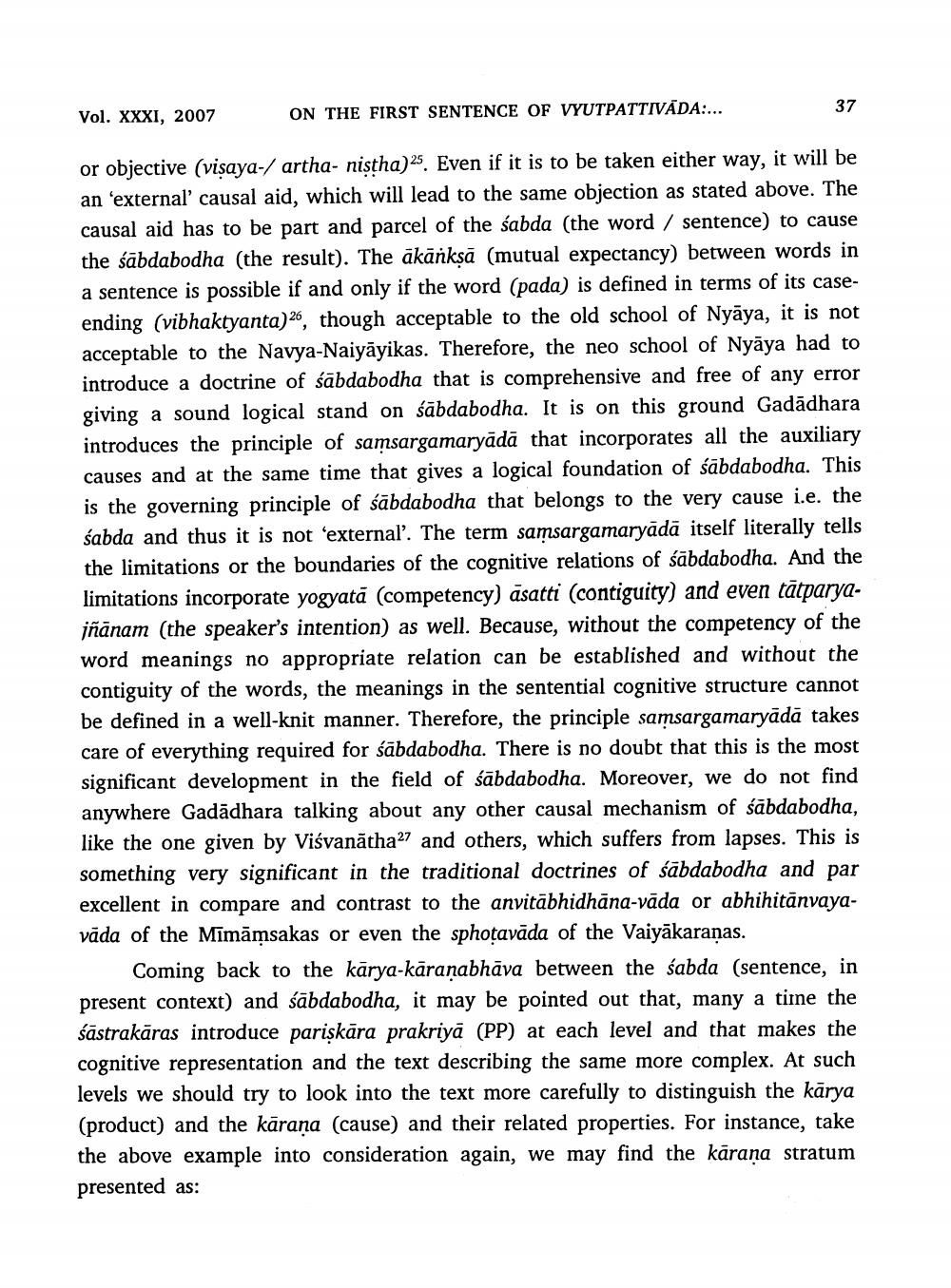________________
Vol. XXXI, 2007
ON THE FIRST SENTENCE OF VYUTPATTIVADA:...
37
or objective (visaya-/ artha- nistha) 25. Even if it is to be taken either way, it will be an 'external causal aid, which will lead to the same objection as stated above. The causal aid has to be part and parcel of the sabda (the word / sentence) to cause the sābdabodha (the result). The ākānksā (mutual expectancy) between words in a sentence is possible if and only if the word (pada) is defined in terms of its caseending (vibhaktyanta)26, though acceptable to the old school of Nyāya, it is not acceptable to the Navya-Naiyāyikas. Therefore, the neo school of Nyāya had to introduce a doctrine of śābdabodha that is comprehensive and free of any error giving a sound logical stand on śābdabodha. It is on this ground Gadādhara introduces the principle of samsargamaryādā that incorporates all the auxiliary causes and at the same time that gives a logical foundation of śābdabodha. This is the governing principle of sābdabodha that belongs to the very cause i.e. the śabda and thus it is not 'external'. The term samsargamaryādā itself literally tells the limitations or the boundaries of the cognitive relations of śābdabodha. And the limitations incorporate yogyatā (competency) āsatti (contiguity) and even tātparyajñānam (the speaker's intention) as well. Because, without the competency of the word meanings no appropriate relation can be established and without the contiguity of the words, the meanings in the sentential cognitive structure cannot be defined in a well-knit manner. Therefore, the principle samsargamaryādā takes care of everything required for sābdabodha. There is no doubt that this is the most significant development in the field of sābdabodha. Moreover, we do not find anywhere Gadādhara talking about any other causal mechanism of śābdabodha, like the one given by Visvanātha27 and others, which suffers from lapses. This is something very significant in the traditional doctrines of śābdabodha and par excellent in compare and contrast to the anvitābhidhāna-vāda or abhihitānvayavāda of the Mimāmsakas or even the sphotavāda of the Vaiyākaranas.
Coming back to the kārya-kāraṇabhāva between the sabda (sentence, in present context) and sābdabodha, it may be pointed out that, many a time the śāstrakāras introduce parişkāra prakriya (PP) at each level and that makes the cognitive representation and the text describing the same more complex. At such levels we should try to look into the text more carefully to distinguish the kārya (product) and the kārana (cause) and their related properties. For instance, take the above example into consideration again, we may find the karana stratum presented as:




